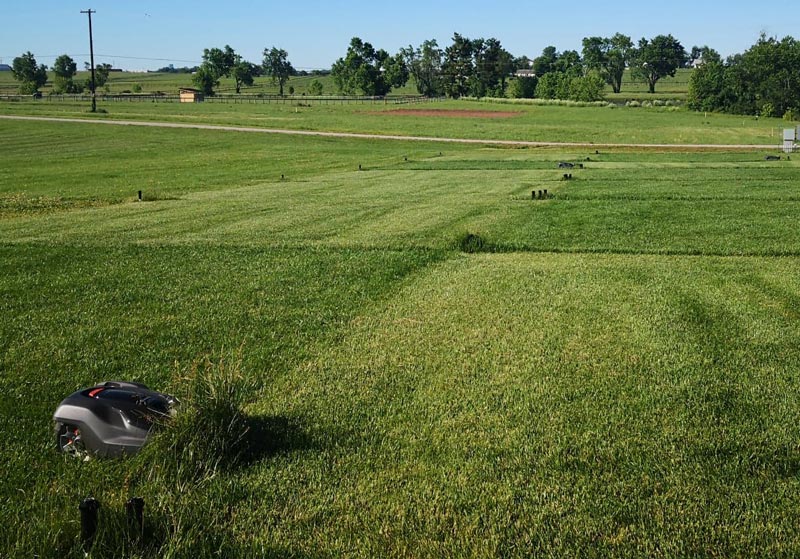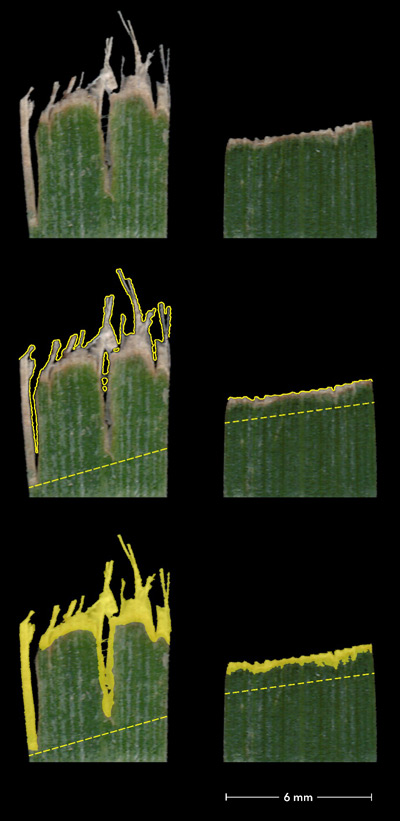
Photo by Travis Shaddox
Robotic mowers are gaining acceptance in the United States. During a recent study at the University of Kentucky, turfgrass mowed with a robotic mower resulted in greener turfgrass than when mowed with a traditional rotary mower.
A study was conducted on tall fescue at the University of Kentucky to determine the influence of robotic mowers on leaf blade cut quality and leaf tip chlorosis. Three six-week experiments were conducted. At the beginning of each experiment, robotic mower razor blades were replaced with new razor blades, and rotary mower blades were sharpened. Forty-eight leaf samples were randomly collected from turfgrass mowed with robotic mowers, and 48 leaf samples were collected from turfgrass mowed with rotary mowers, both cut at 3 inches. Turfgrass leaf collection occurred once each week for six consecutive weeks.

Right: Tall fescue leaf blades cut with a rotary mower (left column) or a robotic mower (right column). The yellow line is the perimeter edge of the leaf blade resulting from the mower incision. The dashed yellow line is the leaf diameter parallel to the leaf incision (flawless incision). The area shaded bright yellow is the area of leaf tip chlorosis.
On average, robotic mowers resulted in a 48% increase in leaf cut quality and a 51% reduction in leaf tip chlorosis. Thus, the observed greener turfgrass resulting from the robotic mower was likely a result of a reduction of chlorotic leaf tissue across the sward. This was likely due to the use of razor blades (rather than traditional steel rotary blades) in the robotic mower, which resulted in a leaf cut resembling that of a reel mower.
Watch: Travis Shaddox, Ph.D., assistant professor in the Department of Plant and Soil Sciences at the University Kentucky, offers insights on robotic mowing and discusses research during a 2020 turfgrass field day:
The continued interest in and use of robotic mowers will undoubtedly raise more questions regarding their influence on turfgrass. Currently, it appears robotic mowers have the potential to cut rough-height tall fescue as well as or better than rotary mowers.
— Travis Shaddox, Ph.D.; Kenneth Cropper, Ph.D.; and Cheng Qian, University of Kentucky, Lexington, Ky.
Andrew Hartsock is GCM’s managing editor.